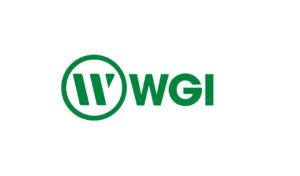UP says, ‘Upgrade rails for passengers, not freight’
Written by jroodFebruary 14, 2001 (The following opinion article, "Rail upgrade needed for passenger service, not freight," was written by Joseph Bateman and appeared Nov. 4, 2009, in the Springfield, Ill., State Journal-Register. Bateman is vice president for public affairs of Union Pacific.) Contrary to the headline and opinions expressed in the Oct. 25 article "High-speed rail spending to be a boon to freight rail companies," Union Pacific does not need for its freight operations the improvements contained in IDOT's proposal for high-speed passenger service in the St. Louis-to-Chicago corridor.
The public expenditure
required for track capacity and other improvements needed on the UP line for
high-speed passenger service is necessitated by the increased frequency in
passenger service (10 to 18 daily trains) and the increase in maximum passenger
train velocity (79 to 110 mph), not by the increased UP freight operations.
Plans to build our new
Joliet intermodal terminal, which could result in additional UP traffic in the
corridor, were announced long before high-speed passenger rail or stimulus
funding grabbed the national spotlight. Union Pacific currently has adequate
capacity on our existing rail corridor infrastructure to support growth in freight
train volumes.
If the time comes when we
might require additional capacity, we will build and finance it ourselves, just
as we have done throughout our 23-state, 32,000-mile network for nearly 150
years.
Nonetheless, we think it is
important for Springfield residents to be aware of misconceptions and facts
regarding this project that have not been widely reported:
* Union Pacific did not ask
for higher-speed passenger trains on our line. We are responding to requests
from the state of Illinois and others to host this service on our line.
* One high-speed passenger
train consumes the equivalent track capacity of two to three freight trains.
Even without freight train growth, a computer simulation of the corridor
demonstrated that double track infrastructure is needed to meet required levels
of service and reliability for IDOT’s four-hour express passenger schedule.
* UP always has been
willing to review any mitigation alternatives the city of Springfield may
propose for the Third Street corridor, including grade separations. To date, we
have received no suggestions for mitigation from either the city or county.
* Congested urban areas
such as between Sangamon and Iles avenues in Springfield require speed
restrictions, most likely in the 40 to 50 mph range, not the 110 mph maximum
speed envisioned elsewhere in this corridor. Passenger trains will operate even
slower in the downtown area because of the station stop.
* The maximum number of
trains running through the Third Street corridor would be 40 combined passenger
and freight per day, assuming maximum growth of UP’s business over the next 10
years. In contrast, there would be 60-plus trains per day using the 10th Street
corridor to accommodate Union Pacific, passenger and Norfolk Southern trains.
* At-grade road-rail
crossings in Springfield would be blocked by 40 trains for a total of
approximately 65 minutes per crossing per day, not five hours per day.
Unnecessary speed restrictions or inadequate rail capacity provisions, however,
would create bottlenecks that will add to blocked crossing time.
* Constructing a bypass for
UP on the 10th Street corridor would require displacing many residences and
businesses to accommodate the required double track and grade separations. In
addition, a new connection track at North Grand Avenue would be required
through or near an area now occupied by housing, the ballpark, Memorial Stadium
and tennis courts.
High-speed passenger rail
ultimately boils down to a public policy decision. If private freight rail infrastructure
is to be used for passenger service, then federal grant policy requires that
sufficient infrastructure capacity must be provided to efficiently and reliably
handle both existing and future freight and passenger service on demand. That
infrastructure must be paid for by the party precipitating that need, in this
case, the sponsor of expanded passenger train operations.





